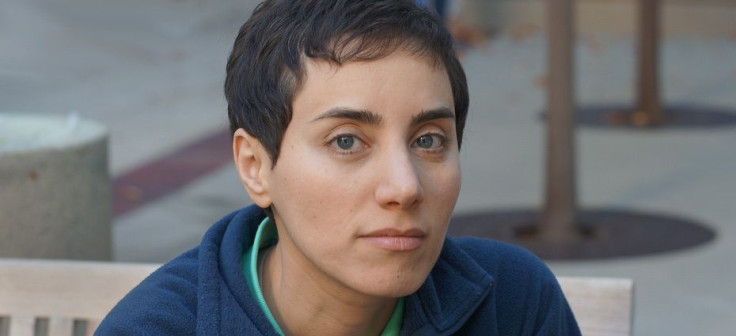Known For Her Maths, Maryam Mirzakhani's Death Rekindles Hijab Debate In Iran

Genius trumped taboo in Iran when some state-run newspapers, in their tribute to mathematician Maryam Mirzakhani, splashed their front pages with her photograph bearing uncovered head.
While some newspapers photoshopped Mirzakhani’s photographs to make it “hijab-compliant,” others followed the lead of Iran President Hassan Rouhani who, on his Instagram account, posted a hijab-less picture of the mathematician who died aged 40 due to breast cancer Saturday in the U.S.
“The grievous passing of Maryam Mirzakhani, the eminent Iranian and world-renowned mathematician, is very much heart-rending,” he wrote.
Mirzakhani, who became the first woman to win the Fields Medal, often described as Maths Nobel Prize, in her death ignited the debate that has been at the center of women's rights in the Islamic country— mandatory hijab.
READ: Maryam Mirzakhani Becomes First Woman To Win Fields Medal
Obligatory wearing of the hijab in public by women has been an integral policy of the Islamic Republic of Iran since the revolution of 1979 when Ayatollah Khomeini took over.
Article 63 of the Iranian penal code penal code states: “Those women that appear in the streets and public places without the Islamic hijab shall be sentenced to prison or fined as a punishment to pay some money to superior authorities.”
It is also one of the edicts the state has found the hardest to enforce, with the moderates in constant debate with hardliners over the definition of public places.
In a recent dissent against mandatory head covering in public spaces, a growing number of women are refusing to wear the hijab while driving their cars, saying the car is a private space where they can dress freely.
Though President Rouhani has decried the crackdown on women who don’t wear the hijab in private spaces, judicial authorities and police have disputed that interpretation.
The country’s media has refrained from taking on the establishment and criticizing mandatory hijab, the ambiguity over the definition of private space has allowed them to give play to both sides of the debate.
“Private or not private?” read an article carried by the state-run Irna news agency. “This is a question that has created a legal and religious discussion about private space within cars.”
READ: Swedish Official Ann Linde Criticized For Wearing Headscarf To Iran
Following Mirzakhani’s obituaries in newspapers, a writer and a sociologist, Mohsen Hessam Mazaheri, wrote official media had been presented with a serious challenge “to show a popular and respectable woman without hijab.”
“The challenge of publishing a photograph of Mirzakhani provided an unexpected opportunity to challenge the official line—and in this challenge, the loser was the official discourse on hijab,” he wrote.
The winner, he said, was Mirzakhani who, with her undeniable standing, forced at least some of the official media to accept that she had made a choice.
“For the first time in almost 40 years after hijab was made compulsory, the picture of a respected Iranian woman has appeared on the front pages of the country’s newspapers," wrote Mazaheri.
It wasn’t just obligatory hijab that Mirzakhani indirectly challenged after her death.
A group of 60 parliamentarians Sunday urged the speeding up of an amendment to a law that would allow children of Iranian mothers married to foreigners to be given Iranian nationality, Fars news agency reported.
Mirzakhani is survived by her Czech scientist husband and her daughter. However, a marriage between an Iranian woman and a non-Muslim man was previously not recognized, making it difficult for their children to visit Iran, the Guardian reported.
© Copyright IBTimes 2024. All rights reserved.




















